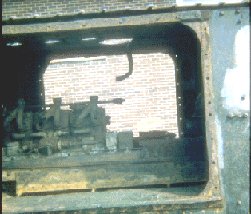

| Here is a short pictorial
summary of the earliest British tanks, from the test vehicle "Little Willie",
through to Mk IV.
I have chosen this grouping of vehicles because they form a reasonably well-defined family, all with the same basic mechanical arrangements and Daimler engine of ~105hp. "Little Willie" and Mk I are distiguished by their tail wheels, intended to assist in steering, and in trench crossing. These were later abandoned as being unnecessary. The subsequent marks up to Mk IV were very similar internally to the Mk I. Major internal changes are most noticeable in Mk V and its successors, following the replacement of the Daimler engine with a purpose designed Ricardo engine. Of course, Mk I is distinguished by possessing a steering wheel to control the tail wheels, and althought not especially noticeable internally to the casual observer, the resiting of the fuel tanks in the Mk IV to externally between the rear horns, instead of on each side of the driver and commander, must have been a great improvement for the crews. I hope these pictures will be of interest, and maybe also inspire a modeller or two to start constructing some of these vehicles.
|
|

Model of Little Willie Note circular blanking plate for
proposed turret, This is the 1/76 resin model by Matador.
|
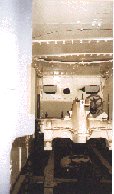
Inside Little Willie Not much to see, |

Model of Mk I Female A conversion from the Airfix 1/76 Mk I, which is actually a Mk II with tail wheels.
|
|
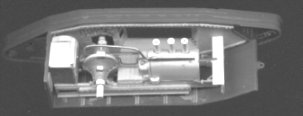
Mk I internal details Under construction in 1/76 scale. Major features (l-r) are radiator, differential housing, Daimler engine, with three vertical exhausts, and, across the front, the strut on which the driver & commander sit. Click here for more details on this model. |

Mk II Female Seen here at Bovington, the Mk II was envisaged as a training vehicle, and lacked proper armoured protection for the crew. Improvements over Mk I included a modified, raised, roof hatch, and a flash eliminating exhaust arrangement on later Mk IIs. Mk III was similar, but with armour to Mk IV standard. |
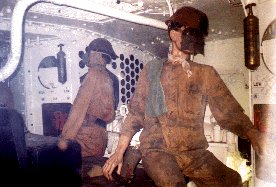
Inside Mk II Looking aft from the left hand sponson |

Inside Mk II The Daimler engine |
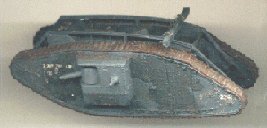
The Emhar 1/72 Mk IV As slated in the modelling press.
|
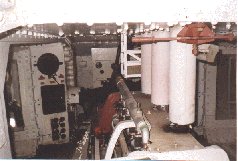
Inside Mk IV Looking aft into the driver's visor |
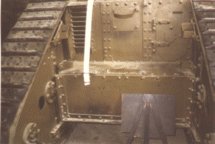
Mk IV Rear, Showing Fuel Tank Emhar, please note the position of the hatch on the fuel tank enclosure! |

Six pounder (short barrelled) As used in Mk IV and onward |
![]()
(pre-GS 'A' number
designations)